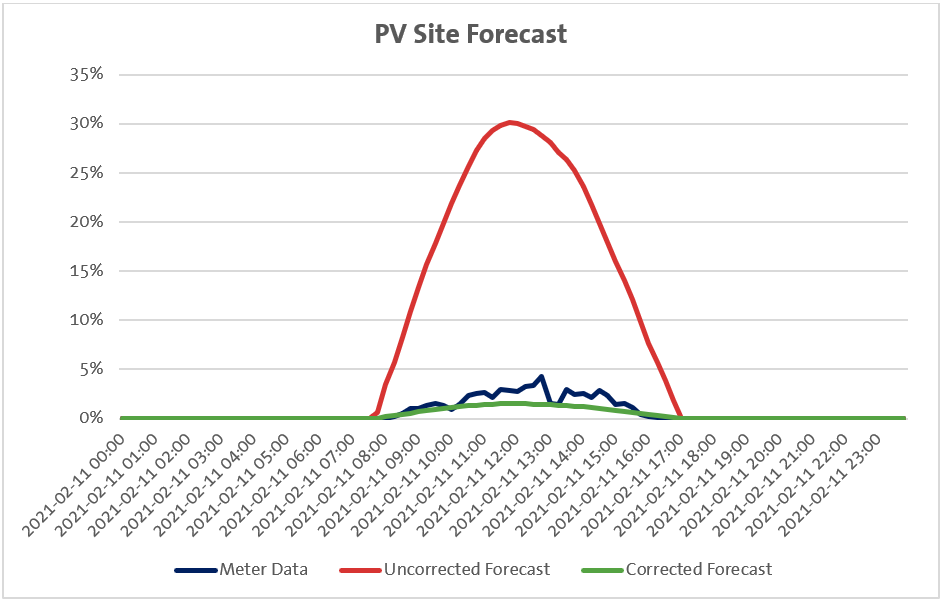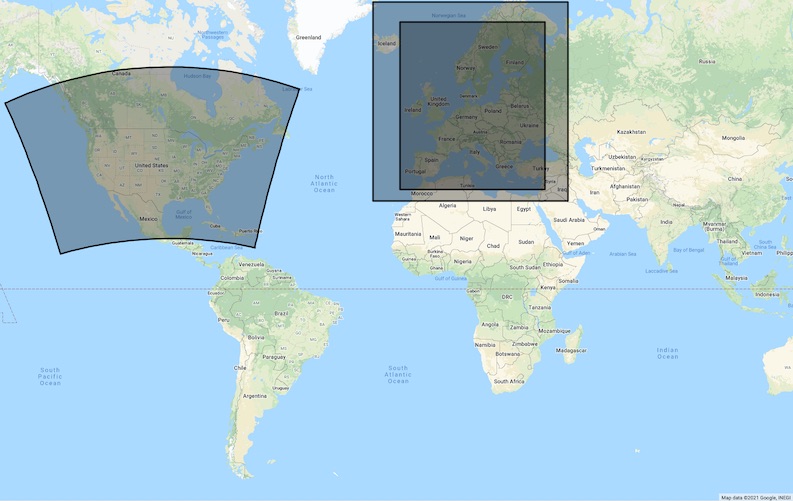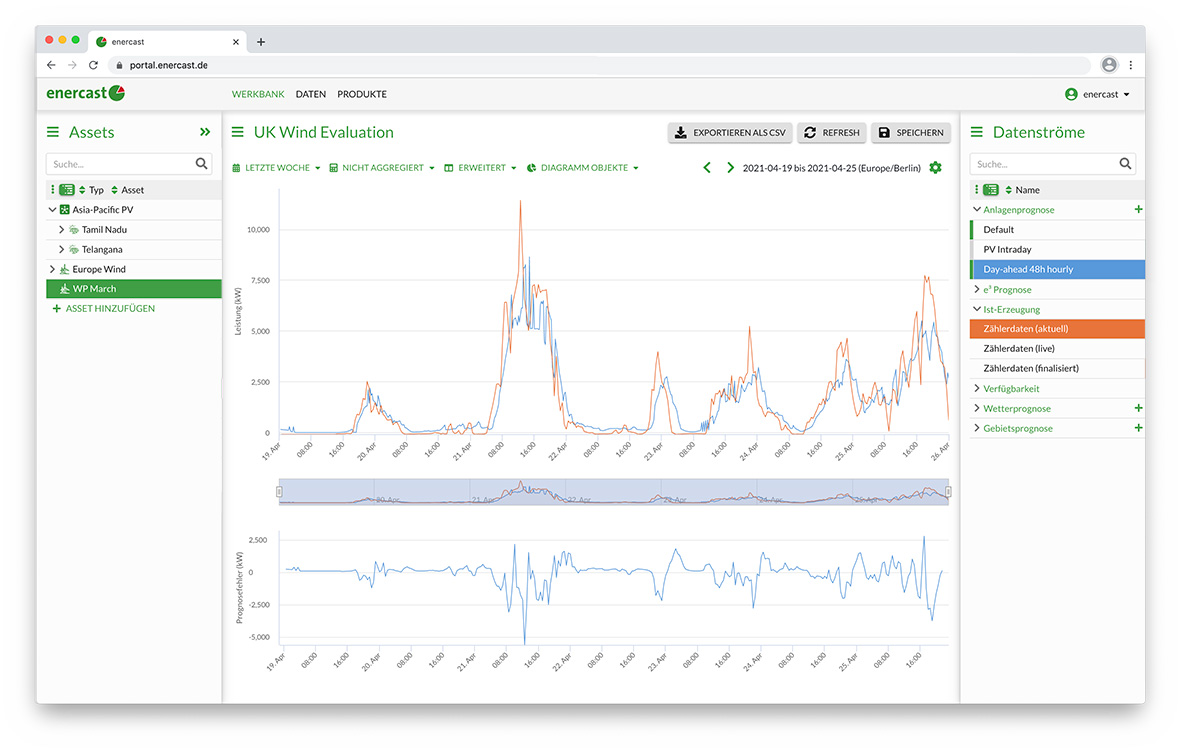What if there is suddenly a thick layer of snow on the solar panels?
High error values in PV power forecasts without snow detection
This February, central and southern Germany experienced unusually heavy snowfall within a very short period of time. Locally, many photovoltaic systems were suddenly covered with a thick layer of snow, which remained there for quite a while and consequently prevented the generation of solar power despite sunshine. If this snow cover is not taken into account when forecasting the generated power of affected plants, high deviations are the result.

Example of a forecast with snow correction. Due to the snow cover, the feed-in was reduced to less than 5% of the installed power, although a power output of 30% would have been possible due to the solar irradiation, as can be seen in the uncorrected forecast. The deviation compared to the actual generated power could be drastically reduced by the correction.
Snow detection tool improves solar power forecasts
The enercast team has therefore developed a tool that adjusts the power forecasts in this extreme weather situation. For this purpose, any existing measurement data as well as selected weather parameters such as temperature and snow depth are continuously monitored. Depending on the results, the forecasts are automatically adjusted. The selection of the correct weather parameters in combination with the available measurement data was a challenge here. Due to the limited availability and applicability of the measured data, several cases also had to be distinguished.
For intraday and real-time forecasts, measured data are available in most cases. Due to various errors in the transmitted data, however, often not much more than 30% of this data can be used. For day-ahead forecasts, on the other hand, measurement data can only be used to a very limited extent. If no measurement data are available or if they cannot be used, the analysis has to be based on weather parameters alone.
Very good results in pilot test
The service was tested on the portfolio of a pilot customer and produced very good results. Close cooperation with the customer was a key success factor here. In the future, additional parameters could be included in the calculation and optimize the results, for example, the tilt angles of the PV panels as an indication of how likely it is that the snow will slide off or remain on the panels.
Sign up for our newsletter
Did you like our blog post and want to receive regular updates on renewable energy performance forecasting? Then the best thing to do is sign up for our newsletter right now..


 Back to overview
Back to overview 

